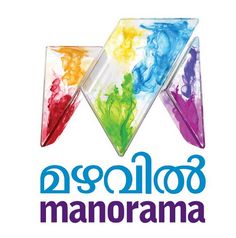
Radio sales is the process of getting companies and brands on air to promote their products. Radio sales are an effective and affordable way to reach a targeted audience with relevant messages.
No matter whether you're new to marketing or a veteran marketer, a strong radio campaign is crucial for the success of your company. However, radio advertising is not like any other form of advertising. It takes some knowledge to make the most of a radio purchase.
1. Understand Your Audience
The most important aspect of any radio purchase is understanding your target audience, the people you want to reach. This will ensure that you don't waste money on stations and shows not targeting your ideal customers.

A good sales rep at a radio station will be able help you understand and communicate with your audience. They can also provide you with information about their listening habits, demographics, and listening habits. They will be able provide information on the best times and places your listeners are most likely listening to your ads.
2. Find Radio Media Buyers
Most radio stations have a team that consists of media buyers. They are responsible to find and sell ad space. These buyers work in partnership with local and regional advertisers, to create creative radio packages which can be used to expand their brand, product or services over time.
They can offer advice on the best radio channels for reaching your target audience. They can recommend the most popular stations in your area and show you signal coverage maps to help you determine where your listeners live and work.
3. Know your ad pricing
The cost of running an ad on a radio station can vary widely depending on the station and time of day you're planning to run your ads. The radio sales representative will help you negotiate the price that suits your needs and budget.

4. Identify the Top Places to Advertise
Advertising on radio can be difficult because many people make the most common mistake of putting their ads at the wrong time or station. A lot of stations will put their commercials on different days and times based on how they think the ad will perform, but this is not always the best way to get your ad seen by the audience you want.
If you own a restaurant, you might look for one that serves lunchtime customers. This will increase your chances of getting customers and help you grow your business.
5. You can become a partner with other businesses
It is worth trying to find similar companies if your niche product is popular. Contact other business owners and discuss the possibility of advertising together.
FAQ
Advertising: What is it?
Advertising is an art. It's not just about selling products. It's about creating emotional connections between people and brands.
Advertising is about storytelling and using images to communicate ideas.
You must communicate clearly and persuasively. You must tell a story that is relatable to your target market.
This makes advertising different from other forms of communication, such as public speaking, writing, or presentations.
When you create a winning ad campaign, it is creating your brand identity.
And this is how you become memorable. You become someone that people remember.
What do you need to know about print advertising?
Print advertising is a great medium to communicate with customers. Many companies use it to promote products and services. The key objective is to capture the attention of the consumer.
Print ads are usually one-page long. They contain text, images, logos, and any other graphics. Print ads can also contain sound, animation, videos, and hyperlinks.
The following categories are the most common types of print advertisements:
1. Brochures - Large format printed brochures are used to draw people in to stores. Brochures can often be adorned with brightly colored images and eye-catching designs.
2. Catalogues- These are smaller versions and variants of brochures. They are typically sent to customers who have requested information on specific items.
3. Flyers - These are small pieces of paper distributed at events such as concerts and fairs. If they are given out at retail outlets, they can be obtained for free, but you must pay for them.
4. Posters – These are larger versions than flyers. They can be displayed on fences, walls, or buildings. They are typically created using computer software programs that aim to attract the attention of passersby.
5. Direct mail – This is a direct mailing of letters or postcards directly to customers. These are sent out by companies to remind customers about their business.
6. Newspaper Ads – These are ads that appear in newspapers or magazines. These ads are often quite long and include both text and images.
What is the basic purpose of advertising?
Advertising isn’t about selling products.
Advertising is about communicating values and ideas to people who are interested in your products or services. Advertising is about changing people's minds and attitudes. It's all about building relationships.
It's about helping people feel good about themselves.
However, if your customers don't want what you have to offer, you won't be able to sell anything.
It is essential to first understand the needs and purchasing habits of your customer before you embark on any advertising project.
Then you can design ads that will resonate with them.
Is it possible to get traffic for free?
The traffic that is free comes from organic search results and does not require you to pay for ads. This is also known as organic or natural traffic. There are many methods to obtain free traffic such as article marketing or social media marketing.
Article Marketing is one way to get free traffic. Paying ads can be more costly than CPC. Article marketing is also known as content marketing.
Social Media Marketing- You can promote your business using social media sites like Facebook and Twitter. These social media platforms can be used to post updates and share photos. You may also build relationships with potential customers. Many businesses pay to advertise on social media sites because they want to reach more people at a cheaper price.
Blogging – Another way to generate traffic for free is to blog. High quality content will draw people to your blog. You can start to monetize your blog with the sale of products or services after you have attracted readers.
Email Marketing - Email marketing has been around since the early days of the Internet, but today it still remains one of the best ways to drive traffic to your website. Sending emails regularly is a good strategy to grow your list of subscribers and eventually sell them something.
What does it mean to be an advertiser buyer?
Advertisers buy advertising space on television, radio, and print media.
Advertisers are paid for the time that their message will appear.
They don't necessarily want the best ad, but they are more interested in what is most effective at reaching their target audience.
Advertisers may have demographic information such as the age, gender, marital status, income level, occupation, hobbies, and interests of their customers.
This data can be used by the advertiser to decide which media is most effective for them. An example is direct mail that appeals to older people.
Advertisers also evaluate the competition. Advertisers might place their ads near similar businesses if they see them.
Advertisers must also take into account the size of their budget as well as the time it will take to spend the money before it expires.
How much does it take to advertise on social networks?
If you decide to go this route, you should know that social media advertising is not free. You will be charged monthly based on how much time you spend on each platform.
Facebook - $0.10 per 1000 impressions
Twitter: $0.20 per 1,000 impressions (if your tweet is on Twitter)
If you send out invitations to Linkedin, $0.30 per 1,000 impressions
Instagram - $0.50 per 1,000 impressions.
Snapchat - $0.60 per 1,000 impressions ($0.40 per user)
YouTube - $0.25 for 1,000 views
Tumblr $0.15 for 1,000 impressions text posts
Pinterest - $0.05 per 1,000 impressions per month
Google + - $0.15-$0.20 per 1 million impressions
Tumblr – $0.15 - $0.20 per 100,000 impressions
Vimeo – $0.20- $0.25 Per 10,000 Impressions
Soundcloud – $0.20-$0.25 for 1 million plays
StumbleUpon - $0.20 -$0.25 per 1 billion pageviews
Digg - $0.20 - $0.25 per 1000 diggs
Reddit - $0.20-$0.25 per 1000 comments
Wordpress – $0.20--$0.25 Per 500 Comments
Flickr - $0.20 -- $0.25 per 5,000 photo uploads
What is branding exactly?
Branding is a way to communicate who and what you are. It's how people remember you and your name.
Branding refers to creating a brand that is memorable for your company. Branding is more than a logo. It encompasses everything, from the physical appearance of your company to the voice and tone used by your employees.
Because customers know exactly what they are getting, strong brands help them feel confident in purchasing from you. They also feel more confident choosing your products than those from competitors.
A good example of a well-branded company is Apple. Its brand is known worldwide for its sleek design, high-quality products, and customer support.
Apple's name is synonymous with technology. Apple is synonymous with technology.
You should think about creating a brand if you are considering starting a business. This will give you and your business a face.
Statistics
- Google will display whichever ad type (CPM or CPC) is expected to earn more revenue for the publisher, which is in Google's best interest since they take a 32% share of the revenue. (quicksprout.com)
- Worldwide spending on advertising in 2015 amounted to an estimated US$529.43 billion. (en.wikipedia.org)
- It's 100% reliant on your website traffic. (quicksprout.com)
- Nonetheless, advertising spending as a share of GDP was slightly lower – about 2.4 percent. (en.wikipedia.org)
External Links
How To
How do I place my advertisement on a billboard
While billboards are known to have been around since at least the late 1800s (and even earlier), they gained popularity during World War II. Most billboards contain text advertising. However, some have photographs or art. Many billboards are static. Others display messages that change periodically, such a weather forecast, stock price, stock scores, political events, or stock market prices.
While most billboards are outdoors displays, indoor versions are available. The majority of outdoor billboards are visible to traffic frequently, while indoor versions may be seen only once every few years. A "cubic" outdoor billboard is the most popular type. It is made up of three layers: two sheets of glass sandwiched between a layer of fiberglass mesh and one sheet of glass. This design allows air circulation through the billboard. It keeps it cool during hot weather and warm during cold.
Billboard Advertising Inc. has many of North America's most prominent billboard advertising firms. Advertisers pay them to advertise on their billboards. These companies then sell advertising space on their billboards. These billboards are purchased by advertisers according to how much they wish to spend on advertising. Many advertisers choose the best spots for their ads by looking at where people are most likely to drive or walk.
In addition to selling ad space, Billboard Advertising Inc. has contracts with local governments to erect signs on city property. Some cities allow billboards anywhere; others restrict them to certain areas. Chicago, for instance, has a restriction that billboards cannot be more than 1,000 feet from any highway. Other cities stipulate that billboards must be at least 500 feet away from any school or church.
Billboard Advertising Inc. has contracts to promote products and services throughout the United States, including Florida, California, Nevada, Texas, Arizona, New Mexico, Colorado, Washington, Oregon, Idaho, Utah, Wyoming, Alaska, Hawaii, Canada, Puerto Rico, Guam, Virgin Islands, and American Samoa.